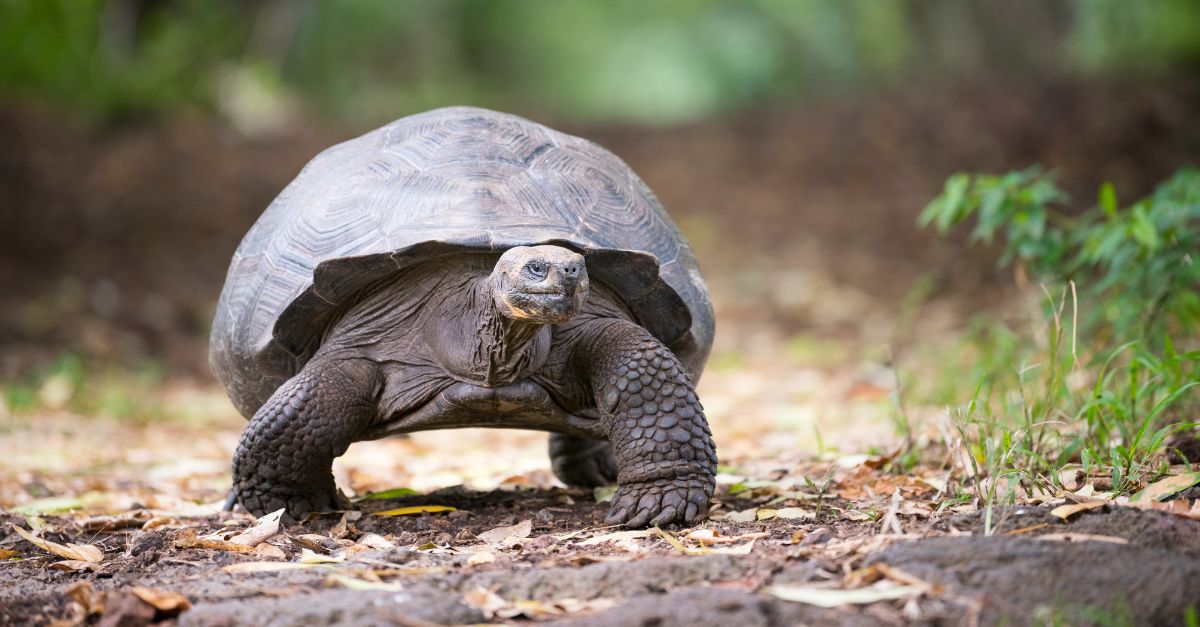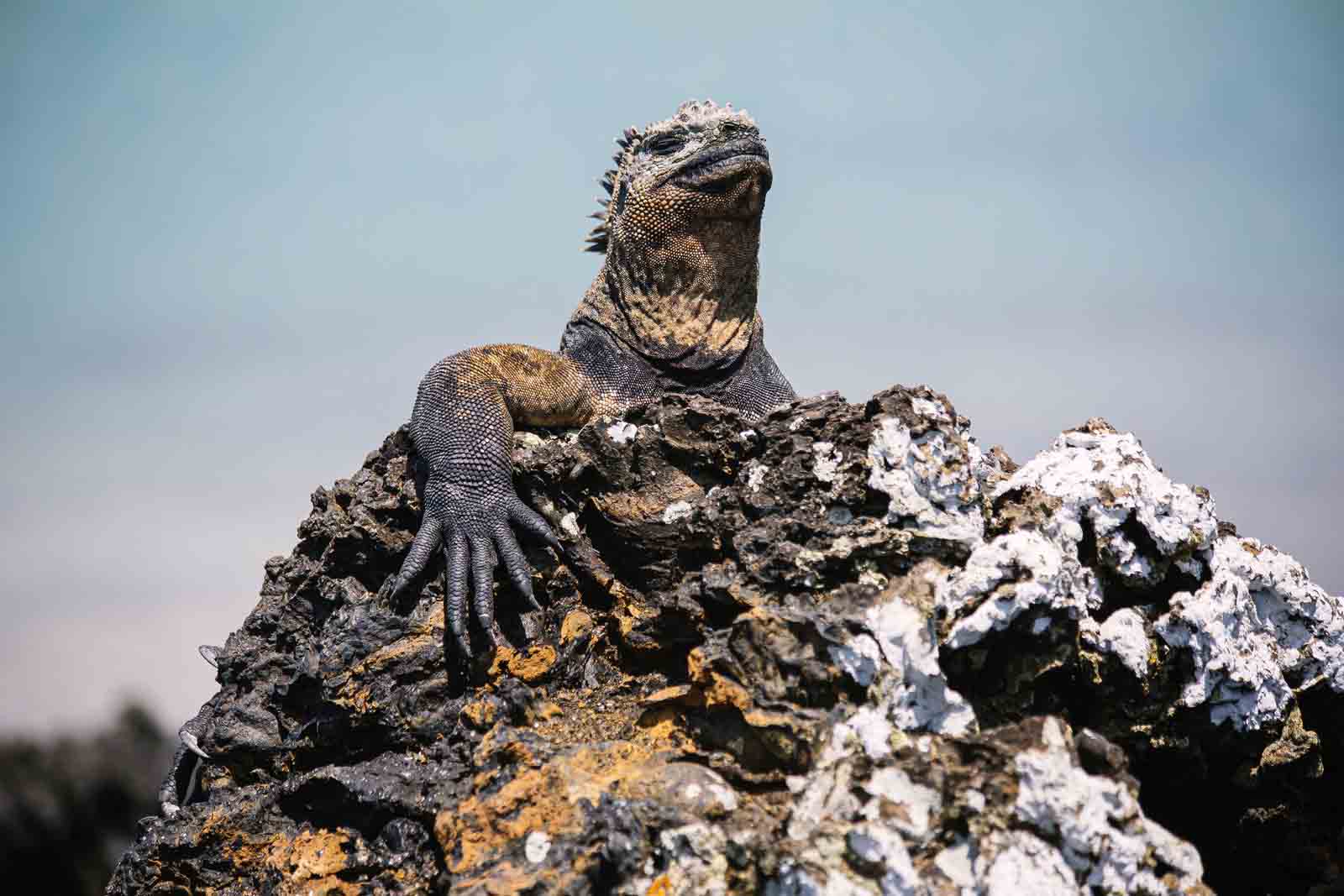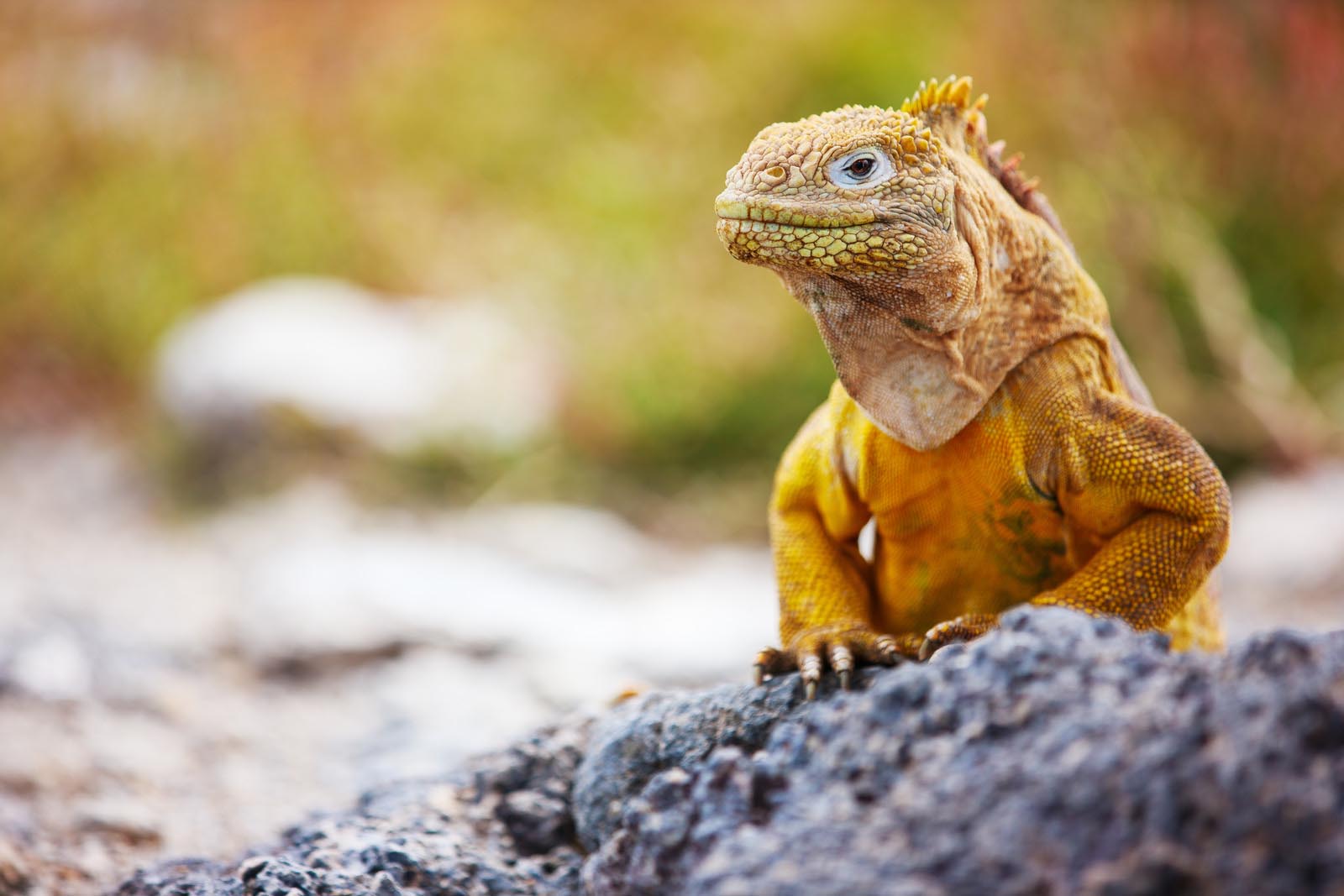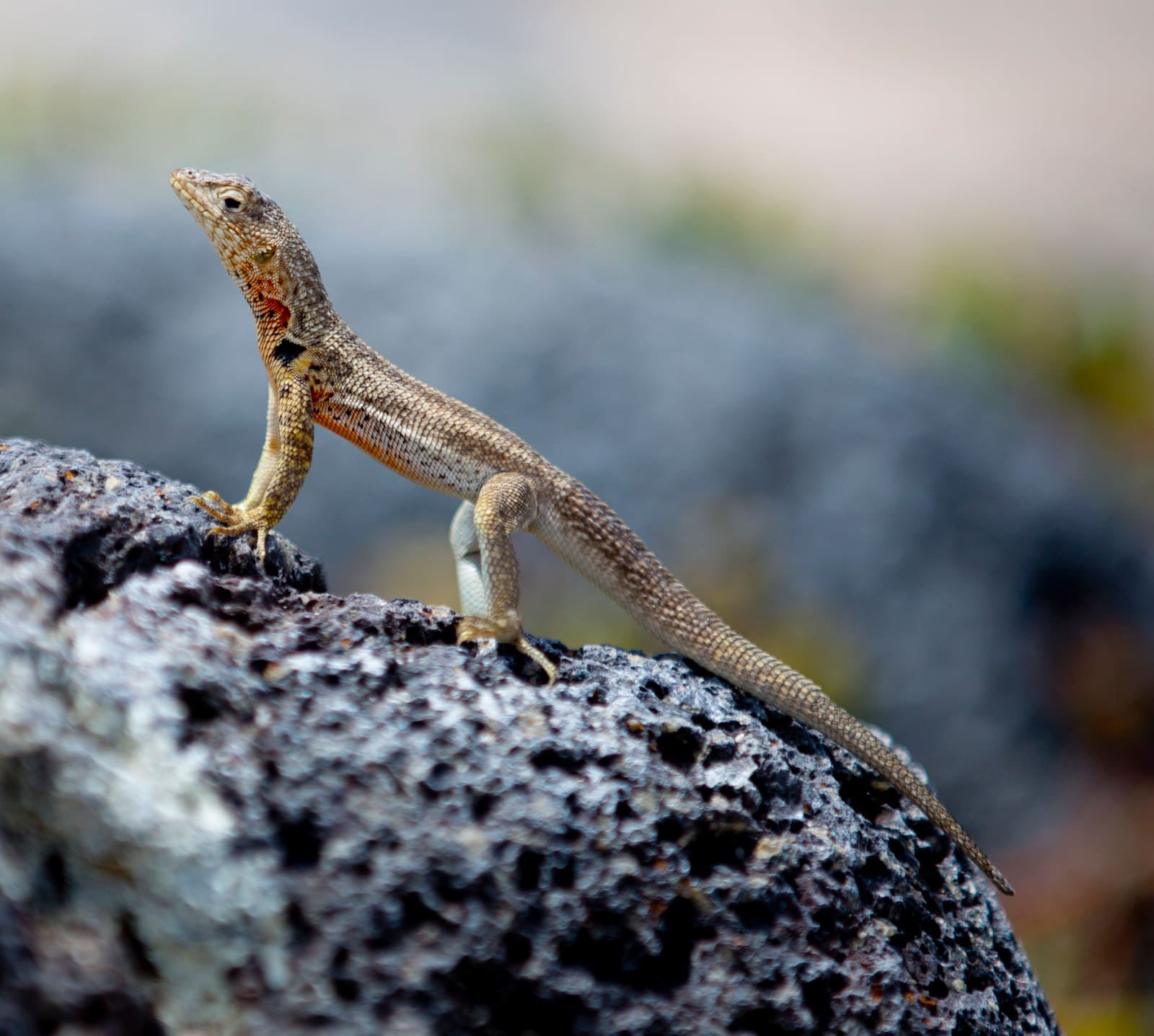Galapagos Reptiles
Are you curious about the unique reptiles of the Galapagos Islands? These islands are home to reptiles found nowhere else in the world. This blog will explore these amazing creatures, their habitats, and how they’ve adapted.
Unique Habitat of Galapagos Reptiles
Galapagos reptiles live in a special and unique habitat. They have adapted to the islands’ harsh conditions over millions of years.
Colonization by reptiles
Reptiles had an edge over mammals in colonizing the Galapagos Islands. They arrived clinging to vegetation or driftwood from the mainland. Reptiles can survive long journeys due to their lower need for water and greater endurance.
Mammals struggle more because they need more water. This allowed reptiles like tortoises and iguanas to settle first on the islands. Their hardy nature helped them thrive in this unique habitat, making them key players in island ecosystems.
Adaptation to ecological niches
Reptiles in the Galapagos adapted quickly after their arrival. Each species found its own niche and evolved over time. Marine iguanas, for example, changed from tree-dwellers to underwater algae-eaters.
They now thrive on rocky shores of the islands.
‘The marine iguana is a marvel of adaptation,’ says Dr. James Watson.
Giant tortoises also show unique adaptations to fit their habitats. Different islands have tortoises with varying shell shapes based on available food sources. These changes make them well-suited for survival in diverse environments across the archipelago.
Endemic species
Galapagos reptiles adapted well to their unique habitats over time. Many species became endemic, meaning they are not found anywhere else in the world. These include marine iguanas, land iguanas, and lava lizards.
The Galapagos Pink Iguana is one such example with a small population on Isabela Island. Endemic species face many threats, including habitat loss and climate change. Protecting these animals helps preserve the island’s singular biodiversity and unusual wildlife.
Giant Tortoises of the Galapagos
The giant tortoises are the largest on Earth. These gentle giants can live over 100 years!

Evolution and size
Giant tortoises evolved to grow large due to abundant food resources. They can weigh over 400 kg (882 lbs) and reach lengths of 1.8 meters (5.9 feet). Without large land predators, these tortoises thrived in their unique ecosystem.
Charles Darwin reported the abundance of Floreana subspecies in 1835. “The immense size of these creatures is astonishing,” he noted. Their enormous size helps them survive longer without food or water during dry periods.
Conservation efforts
Conservation efforts for the giant tortoises in the Galapagos have seen success. Breeding stations on San Cristobal, Santa Cruz, and Isabela Islands play a big part. These stations help raise young tortoises until they are ready to live on their own.
Recent efforts boosted the population of many subspecies. More tortoises now live in the wild than during their peak exploitation period. Sadly, Floreana’s subspecies went extinct by 1846.
Yet, these ongoing actions show hope for remaining species.
Viewing locations and tourist attractions
To see giant tortoises, visit breeding stations on San Cristobal, Santa Cruz, and Isabela Islands. They thrive in these places from June to December. The Charles Darwin Research Station on Santa Cruz is especially famous for this.
At the Charles Darwin Research Station, you can learn about Lonesome George, the last known Pinta Island tortoise. Visit nature reserves and highlands to catch a glimpse of these massive creatures in their natural habitat.
Ecotourism helps fund conservation efforts and protect endangered species like these tortoises.
Marine Iguanas
Marine iguanas are the only lizards in the world that can swim in the ocean to find food. Read more about these amazing reptiles!

Feeding habits and diving
Marine iguanas eat mainly underwater algae. They dive down to 50 feet (15 meters) to find food. When they finish eating, they bask on lava rocks. The sun helps warm their bodies after diving in cold water.
These reptiles are spread across the Galapagos Islands. They have adapted well to living between land and sea. Their diet consists of oceanic plants found near coastal ecosystems.
Breeding season and nesting
Breeding season for marine iguanas begins around November and December. Males show dominance by head-butting other males. They fight to win a territory where they can mate with females.
Nesting happens in January and February. Females dig holes in the sand to lay their eggs. Eggs hatch late May, making baby marine iguanas easy to spot in June. The nesting process involves building a nest, laying eggs, and waiting for them to incubate and hatch.
Endemic to the Galapagos Islands
Marine iguanas are unique to the Galapagos Islands. They do not live anywhere else in the world. These reptiles, known as “Christmas Iguanas,” can be found in many colors on Española Island.
They have a special ability to forage in the sea, feeding on algae underwater.
Many tourists are drawn to see these fascinating creatures. Their black bodies and sharp claws help them swim easily through strong ocean currents. Marine iguanas often catch attention for their unusual diving habits and striking appearances.
Galapagos Land Iguana
The Galapagos land iguana is a striking reptile with its yellow and brown skin. It munches on cactus pads and fruits for food.

Appearance and diet
Galapagos land iguanas are larger and more colorful than marine iguanas. They have a dull golden yellow color with thick skin. This thick skin allows them to eat cactus spines without getting hurt.
These iguanas primarily feed on vegetation, especially cactus pads. They also eat fruits and flowers when available. Their diet makes them important herbivores in their ecosystem.
Protection and captive breeding
The Galapagos Land Iguana faces many threats. To protect them, conservationists started breeding programs. A key site for this is the Charles Darwin Research Station. Here, they breed iguanas in captivity to boost their numbers and avoid extinction.
These efforts are crucial for habitat preservation and species survival. Newly bred iguanas are later released back into the wild. This helps maintain biodiversity on the islands.
Distribution and activity period
Galapagos land iguanas live on Fernandina, Isabela, Santa Cruz, North Seymour, Hood, and South Plaza Islands. They are there all year round. Most of the time, you only see one land iguana at a time in the wild.
Iguanas engage in a symbiotic relationship with birds that remove parasites and ticks from them. These reptiles can often be found basking to regulate their body temperature. Their activity period peaks during cooler parts of the day when they forage for food or bask in the sun to stay warm.
Lava Lizard
Lava lizards are small and colorful. They live on the rocky ground and adapt well to different islands.

Characteristics and habitat
Lava lizards live across the Galapagos Islands. They have small bodies, with some reaching over a foot long. Their skin color helps them blend in with their surroundings.
They thrive on rocks and within scrubby vegetation. These curious reptiles stay active all year round, making them easy to spot by visitors exploring the islands.
Subspecies and island adaptation
Lava lizards show amazing adaptation skills. Seven subspecies exist on different Galapagos Islands. Each one has unique traits suited to its island habitat. Guides can even identify which island a lava lizard is from by looking at photos.
These reptiles thrive in various environments across the archipelago. At least 28 species live there, with seven being endemic to the islands. This means they are found nowhere else in the world.
Their ability to adapt helps them survive and flourish on each island.
Other Endemic Galapagos Reptiles
The Galapagos Islands house many rare reptiles. Some unique species include pink iguanas and certain geckos.
Pink Iguana and endemic snakes
The Pink Iguana lives in the highlands of Isabela Island. It is different from common land iguanas. This rare reptile shares its home with four subspecies of endemic snakes. These unique snakes have adapted well to their own niches.
One snake, the Hood Racer, is only found on Española Island. Its behavior and diet are specialized for this location. These reptiles show how diverse and interesting life can be on the Galapagos Islands.

Endemic and introduced species of geckos
Six species of geckos live only in the Galapagos Islands. Three other species came from outside. Geckos are small, active at night, and eat insects. They hide on walls, windows, and ceilings where it’s hard to see them outside.
Introduced gecko species can harm native ecosystems. They compete for food with local creatures like lava lizards. This competition can upset the balance of nature around them.
Experience an unforgettable Galapagos adventure focused on reptiles! Encounter giant tortoises, marine iguanas, and lava lizards in their natural habitats. Explore volcanic landscapes and pristine beaches, connecting with the unique reptiles of this remarkable ecosystem.
Galapagos reptiles are amazing. They show nature’s wonders and adaptations. From giant tortoises to marine iguanas, these creatures captivate visitors. Protecting them ensures future generations can enjoy their beauty too.
Explore the Galapagos Islands to see these unique reptiles up close.
Frecuently Asked Questions
The Galapagos is home to unique reptiles like giant tortoises, marine iguanas, and lava lizards.
Galapagos reptiles have special adaptations like salt glands in marine iguanas for living near the ocean and long necks in tortoises for reaching high vegetation.
Yes, many species such as certain types of giant tortoises are endangered due to habitat loss and introduced predators.
Visitors can often see these fascinating creatures up close during guided tours while following strict conservation rules to protect them.